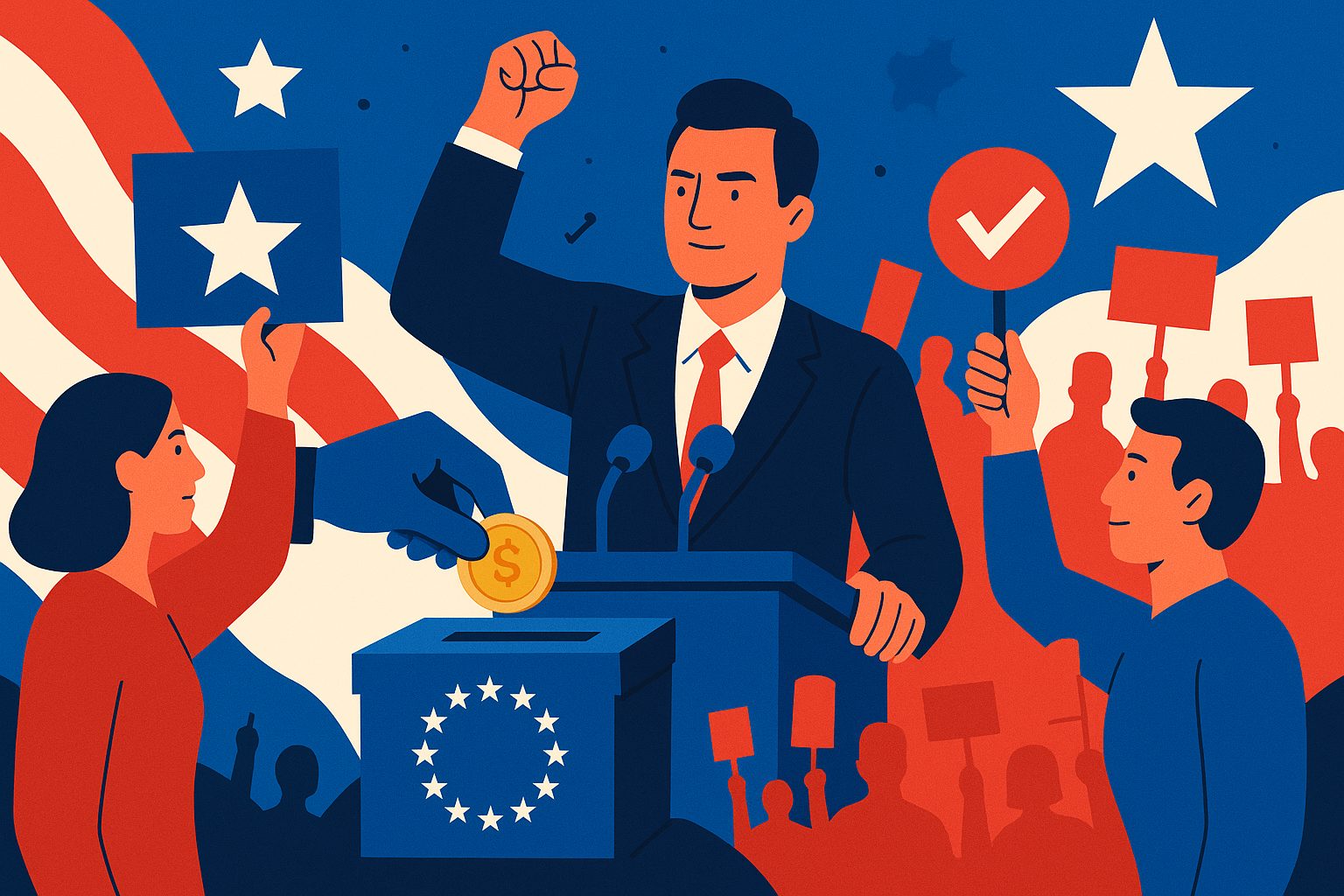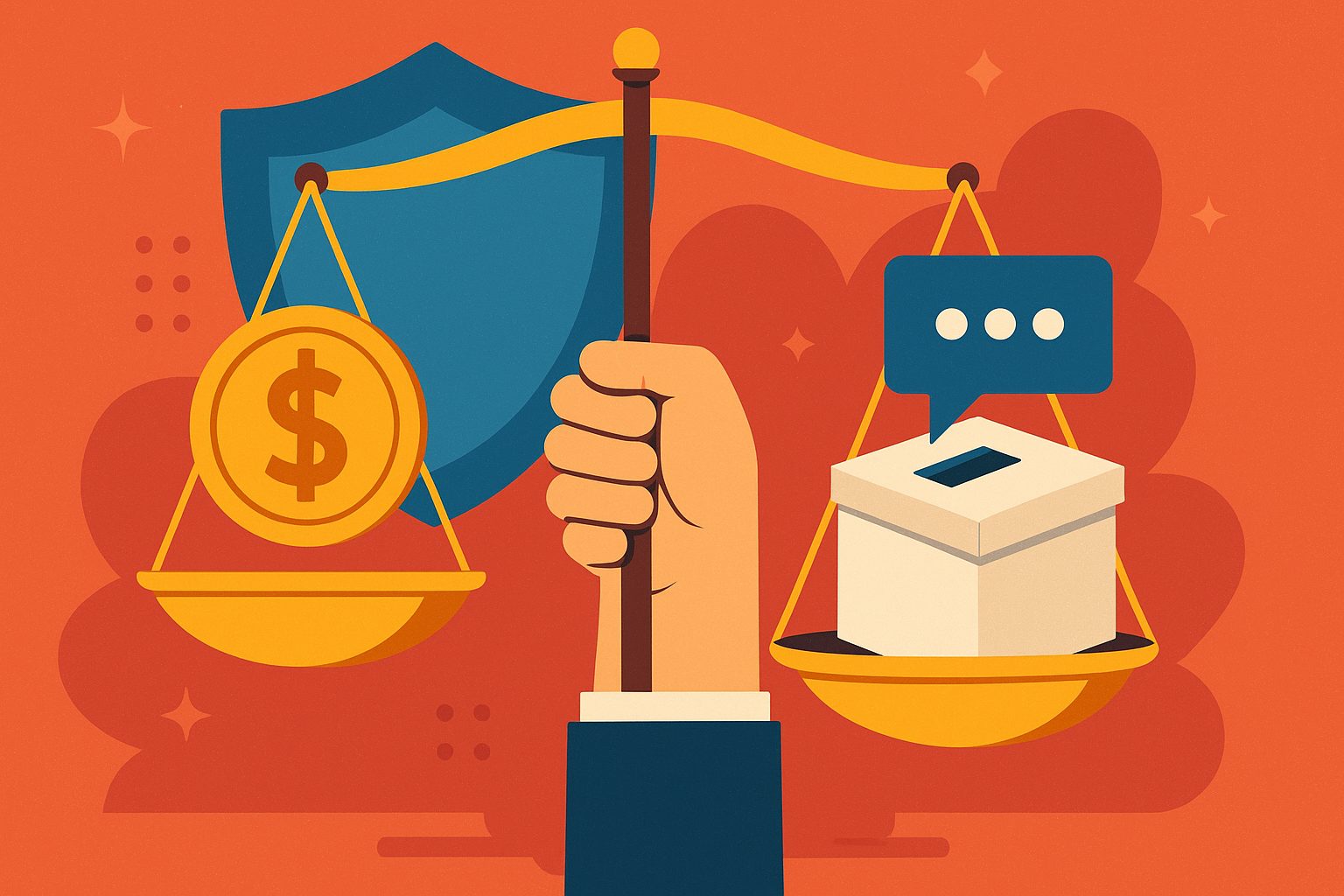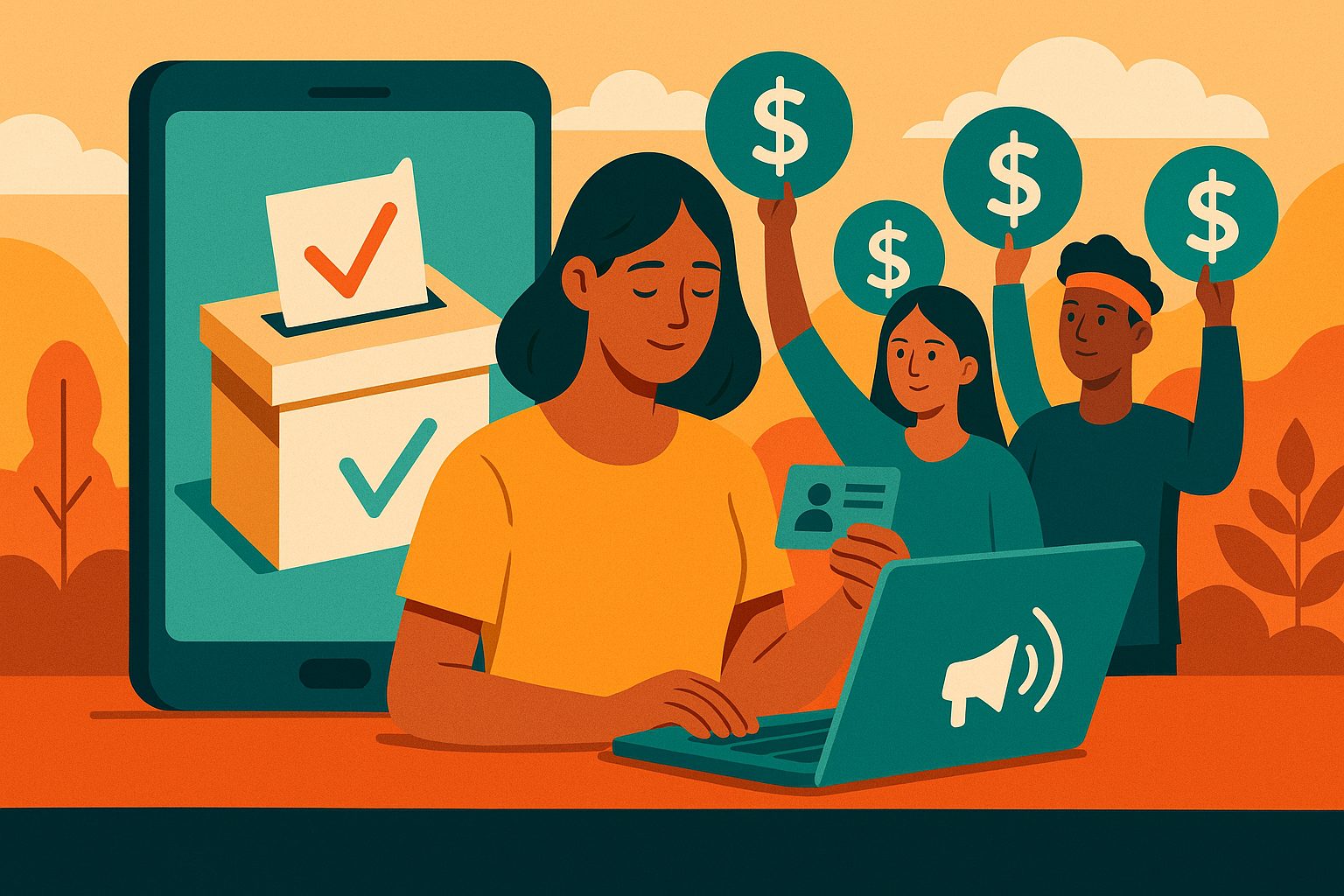The People’s Purse: A New Era of Political Funding
Campaign finance has long been the domain of the powerful—super PACs, corporate donors, and deep-pocketed elites. But over the past decade, a grassroots revolution has been reshaping the very foundation of political fundraising. Political crowdfunding, once a fringe tactic, has rapidly evolved into a central strategy for candidates across the ideological spectrum. From city councils to presidential primaries, the way candidates raise money is changing—and with it, the relationship between politicians and the people. Crowdfunding is not just a tool; it’s a statement. It signals a campaign’s commitment to transparency, public engagement, and bottom-up momentum. Instead of courting billionaire donors at closed-door galas, today’s most dynamic candidates are building armies of small-dollar supporters through social media, email, and peer-to-peer networks. In this article, we explore how political crowdfunding is transforming campaign finance, altering power structures, and giving rise to a more democratic model of electoral participation.
From Big Donors to Digital Dollars
The shift from traditional fundraising to crowdfunding marks a seismic change in how candidates relate to money—and to the public. In the old model, a candidate’s viability was often measured by how much money they could raise from wealthy backers. Success was tied to exclusive fundraisers, bundlers, and high-dollar checks. But this top-heavy model had consequences. It reinforced political inequality, distanced politicians from everyday voters, and created policy priorities shaped by a privileged few. Political crowdfunding upends that hierarchy. By enabling individuals to contribute $5, $10, or $25 at a time, campaigns can now raise substantial war chests without ever setting foot in a private donor’s mansion. Platforms like ActBlue, WinRed, and GoFundMe have normalized online giving, turning viral energy into campaign fuel. The result is a new kind of political currency—not just dollars, but trust, engagement, and digital momentum.
Small Dollars, Big Movements
The power of small-dollar donations goes beyond the balance sheet. It’s about building movements that are participatory, inclusive, and resilient. When thousands—or even millions—of people contribute to a campaign, they’re not just funding a candidate; they’re joining a cause. Each donation is an act of endorsement, a micro-investment in a shared vision. This shift has been most visible in insurgent campaigns. Think of Bernie Sanders, whose 2016 and 2020 presidential bids were powered by millions of individual contributions averaging around $27. Or Alexandria Ocasio-Cortez, who unseated a long-standing incumbent without corporate money. Their campaigns proved that small donors, when mobilized effectively, can out-fund and out-organize traditional power players. This model turns fundraising into grassroots organizing. Donors become volunteers. Volunteers become advocates. The campaign becomes a community.
Transparency and Trust in the Digital Arena
One of the great appeals of political crowdfunding is its transparency. Unlike PACs and dark money groups, which often obscure their funding sources, crowdfunding platforms offer clear records of who’s giving and how much. This openness helps build trust with voters who are increasingly skeptical of political influence. Candidates who rely on small donors can credibly claim independence from corporate interests and lobbyists. Moreover, the public nature of crowdfunding creates accountability. When a candidate’s funding base is visible to all, it becomes harder to obscure allegiances or shift priorities behind the scenes. Transparency is not just ethical—it’s strategic. In an age where trust in institutions is declining, authenticity and openness are political assets. Crowdfunding lets candidates show, not just tell, that they’re listening to the people.
Digital Tools Driving Donor Engagement
Crowdfunding’s success is deeply tied to the rise of digital campaigning. Social media, email marketing, and SMS fundraising have made it easier than ever to reach potential donors. Algorithms amplify compelling messages, while user-friendly interfaces make giving as easy as a click or a tap. Campaigns now deploy sophisticated tools to segment their audiences, personalize appeals, and build long-term donor relationships. A supporter who donates once is often re-engaged with updates, thank-you messages, and new asks. Data analytics help campaigns understand what messaging works, what time to send it, and how to deepen donor engagement over time. The result is not just more donations—but smarter fundraising. Political crowdfunding is becoming a high-tech operation, blending emotion and analytics to maximize reach and resonance.
Crowdfunding as a Signal of Momentum
In today’s political environment, money is not just a means—it’s a message. Crowdfunding allows campaigns to demonstrate momentum and viability in real time. A surge in small-dollar donations can attract media attention, build credibility, and even shift polling. Journalists, analysts, and primary voters alike take note when a campaign raises millions from everyday people. These numbers signal enthusiasm, grassroots energy, and the ability to scale. Crowdfunding also enables rapid response. A viral moment—whether a powerful speech, a televised debate, or a controversy—can trigger a wave of contributions within hours. Campaigns that are ready to capture this momentum with donation links and shareable content can turn public interest into political capital. In this way, crowdfunding becomes a living reflection of a campaign’s strength. It’s not just a back-end process—it’s front-line political theater.
Lowering Barriers to Entry in Politics
Perhaps one of the most revolutionary effects of political crowdfunding is its ability to level the playing field. Historically, running for office required wealth, connections, or access to institutional support. This kept countless qualified, passionate candidates—especially women, people of color, young people, and working-class individuals—out of the game. Crowdfunding changes the math. It empowers candidates who may not have elite networks but do have community support, compelling ideas, and the digital savvy to tell their story. With a strong message and the right tools, anyone can build a base of supporters online and raise the funds needed to compete. This democratization of finance opens the door to a more representative and diverse political landscape. It gives voice to those who have long been shut out—and gives voters more choices that truly reflect their values and needs.
Challenges in the Crowdfunding Model
Despite its promise, political crowdfunding is not without its challenges. The same digital tools that power small-dollar fundraising can also create information overload and donor fatigue. Supporters are bombarded with emails, texts, and social asks from dozens of candidates. The competition for attention is fierce. Additionally, crowdfunding success still often depends on access to digital infrastructure, media visibility, and pre-existing social capital. Candidates from marginalized communities may still struggle to break through the noise without significant support or amplification. Fraud and misinformation are also risks. Bad actors can exploit crowdfunding to run dishonest campaigns or mislead donors. Platforms and regulators must work to ensure transparency, ethical conduct, and accountability in this rapidly evolving space. As crowdfunding becomes more central to campaign finance, it will require stronger norms, smarter tools, and continued vigilance to maintain integrity.
The Role of Platforms and Policy in Shaping the Future
The rise of political crowdfunding has prompted new questions about the role of platforms and the need for updated regulations. Companies like ActBlue and WinRed have become powerful gatekeepers in the funding ecosystem. Their design choices—such as default recurring donations or suggested amounts—can significantly influence campaign behavior and donor experience. As these platforms grow, so too does the need for transparency and ethical design. Regulators, meanwhile, are beginning to consider how campaign finance laws should evolve. Should there be caps on digital donations? Stronger verification processes? Public financing alternatives? These questions will shape the future of political giving in an age where every candidate has a donation link. The policy environment must strike a balance between innovation and integrity—ensuring access while guarding against exploitation.
Crowdfunding and the Future of Democracy
At its best, political crowdfunding is about more than money. It’s about connection, empowerment, and shared purpose. It transforms campaigns from top-down machines into bottom-up movements. It allows voters to do more than cast a ballot—they can help fund the future they believe in. In an age of disillusionment and polarization, this participatory model offers hope. It proves that people still care enough to give. That they believe change is possible. That they are willing to invest in it—literally. Crowdfunding won’t solve all the problems of campaign finance. But it offers a more transparent, inclusive, and democratic alternative to the status quo. It aligns political fundraising with the values of the people, not just the interests of the powerful.




